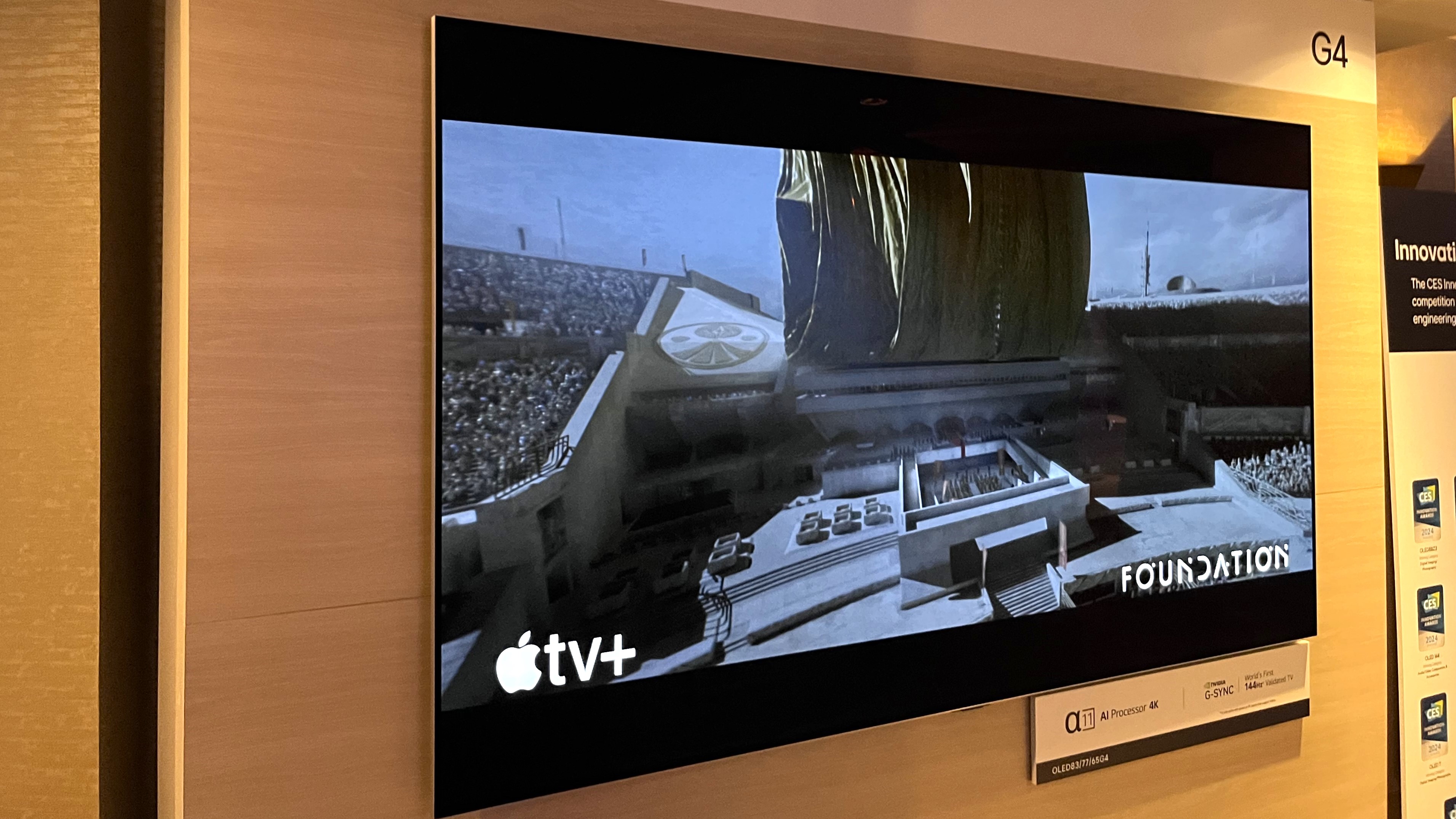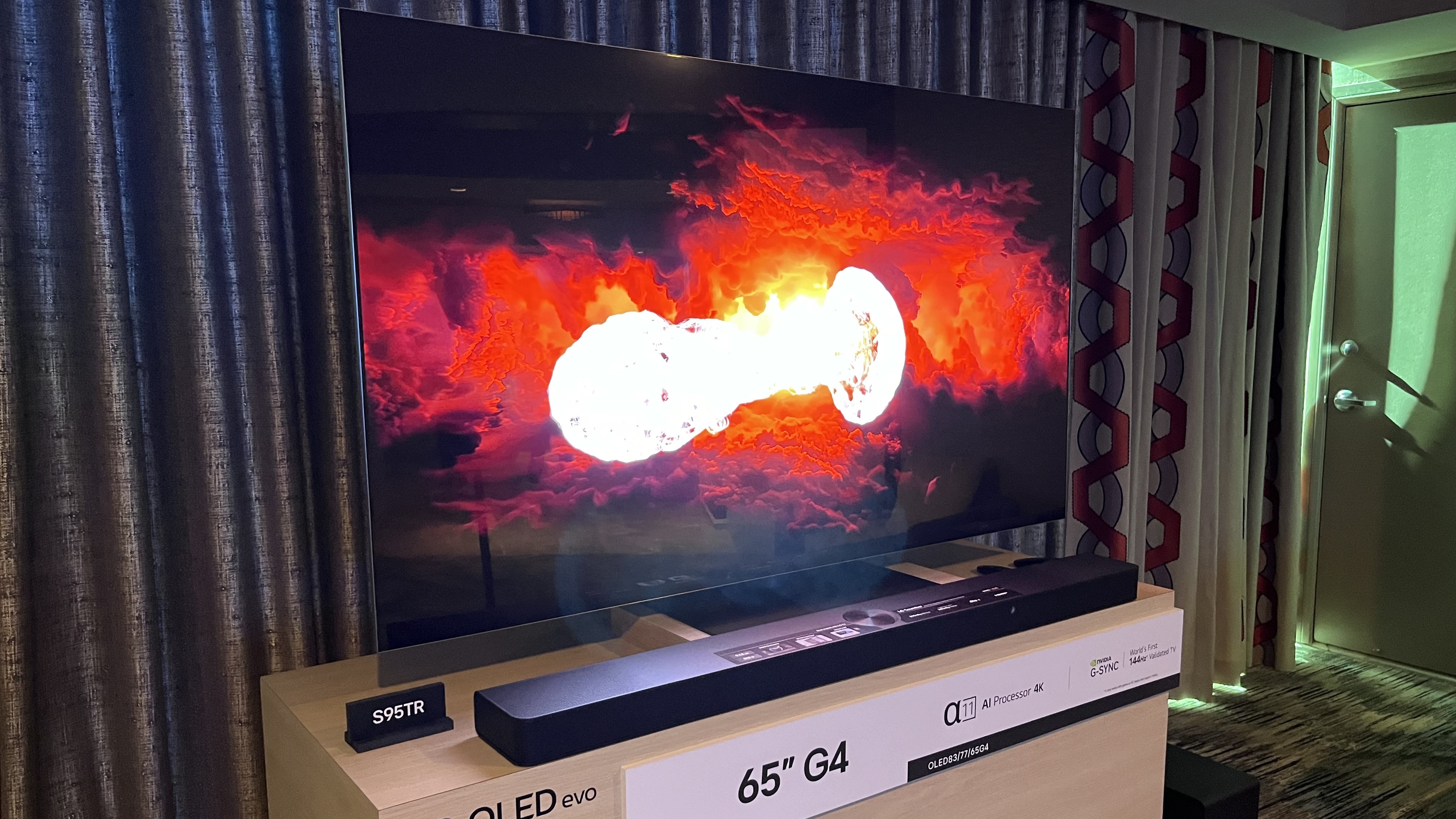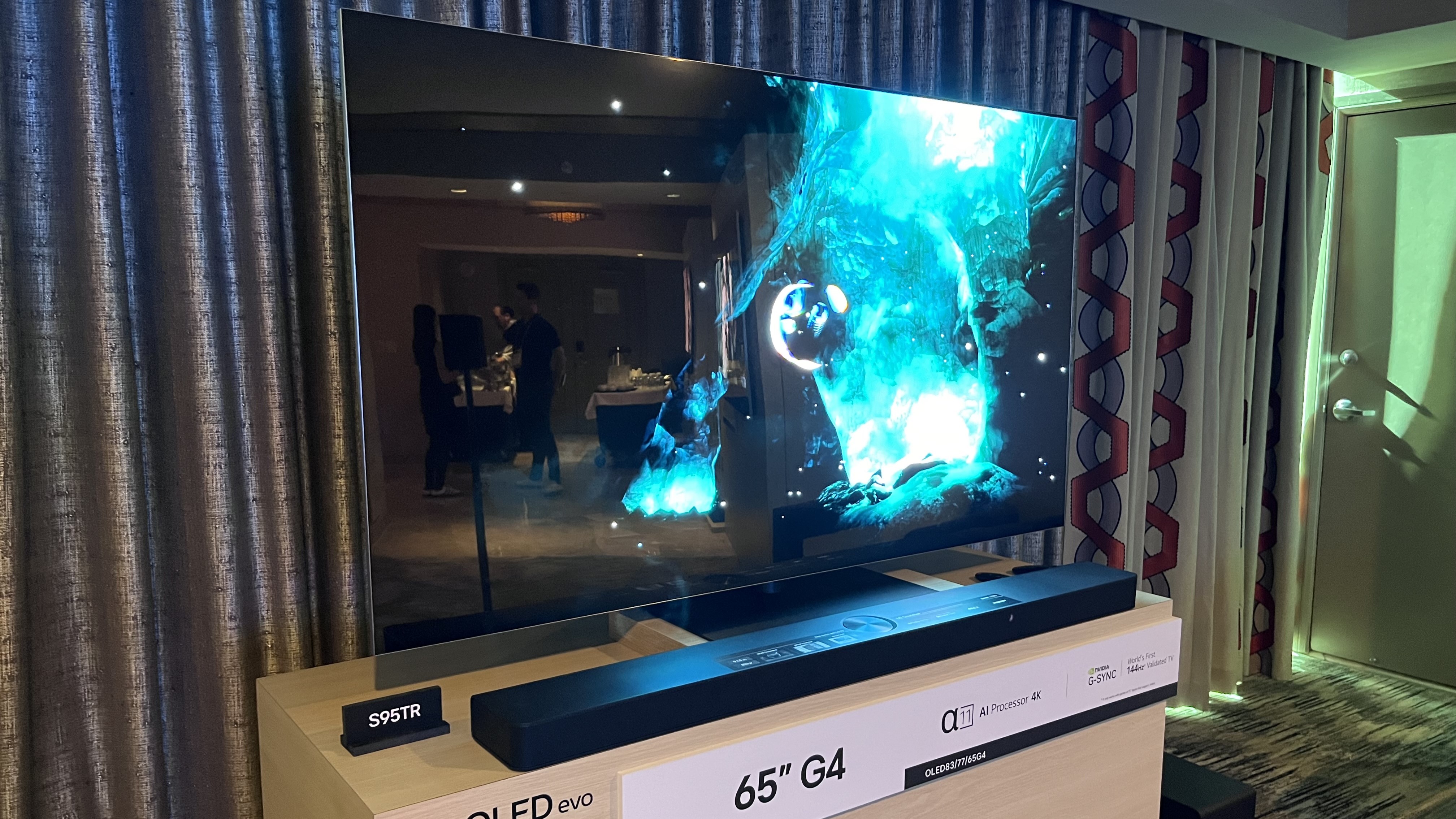I saw the new LG G4 OLED TV – and the brighter picture is just the beginning
LG had its full lineup of new OLED TVs on display at CES 2024 in Las Vegas last month. Although the company’s booth on the show floor always has a carnival-like quality that makes it a fun walk-through (intense crowds aside), at this year's CES I was glad to be invited to a private briefing that let me get an up-close look at the new TVs, the LG G4 OLED included.
The LG G3 was one of the best OLED TVs to arrive in 2023 due to its combination of high peak brightness, powerful gaming features and premium design. Naturally, I was eager to get a look at its successor, which adds a number of features to enhance both performance and usability. Let’s first cover those, and then we’ll move on to my subjective impressions of the LG G4’s picture.
Starting out with performance, the LG G4 features a next-gen MLA (Micro Lens Array) OLED panel that LG Display (the business segment of LG that supplies OLED panels to the LG Electronics division) claims to be capable of 3,000 nits peak brightness. And while it’s unlikely that actual OLED TVs arriving in 2024 will achieve that level of peak light output, LG Electronics has announced that the new G4 TVs will be up to 70% brighter than “conventional” OLED TVs, such as the company’s forthcoming B4 series.
MLA, which is just one of LG’s Brightness Booster Max picture enhancement features, will be featured in the 55-, 65-, 77-inch G4 series models, along with the 83-inch model, a size that lacked MLA in last year’s G3 series. The G4 series will also have a new 97-inch screen size, and that specific model will omit MLA, proving that bigger isn’t always better.

The new Alpha 11 processor found in both the G4 and M4 (a wireless TV series that is otherwise identical to the G4) provides four times the power of the Alpha 9 processor found in the new LG C4 OLED TVs. That power boost makes possible a Max Peak Highlighter feature that enhances brightness levels by 150% compared to conventional OLED TVs (such as the forthcoming LG B4) for HDR highlights, according to the company.
LG ‘s new processor for its top OLEDs also enables an AI Picture Pro mode with a suite of new features. These include ‘object enhancement by visual perception' to better define objects appearing on-screen, and AI Director Processing, which analyzes the picture to determine the director’s intent and enhance colors accordingly.
If that all sounds like a bit too much AI for your liking, the AI Picture Pro mode can also be switched off. Another new picture mode making its debut in LG’s 2024 TVs, the G4 series included, is Dolby Vision Filmmaker Mode. LG’s TVs will be the first to feature the new mode, which will allow for movies and shows with Dolby Vision HDR to be viewed with the same minimal processing level found in regular Filmmaker Mode.

Audio, Gaming and Smart TV
The performance of both audio and gaming will also see improvements in the LG G4. Specifically, the Alpha 11 AI processor will deliver virtual 11.1.2-channel Dolby Atmos sound (the previous LG G3 maxed out at 9.1.2 channels), while a new voice remastering feature isolates and enhances dialogue for greater clarity. Wireless lossless Dolby Atmos and DTS audio output will also be supported when the TVs are paired with higher-end offerings in LG’s soundbar range. On the gaming front, the LG G4 series will join other LG 2024 OLED models in being the first 144Hz Validated TVs, with the validation carried out by Nvidia.
As for usability, the new version of LG’s webOS for its 2024 TVs features smaller Quick Cards, which are hubs on the TV’s home screen for app categories such as sports, games, smart home and more. Quick Cards are now dynamic, with a drop down option so you don’t have to exit the main screen. LG has also added a Voice ID recognition feature to switch between multiple viewer profiles via voice commands, quad-screen multi-view to view up to four video sources onscreen at once, and Chromecast built-in support.
We took issue with LG in our LG G3 review for not including a stand with the TV, but that situation is addressed in the new LG G4, which will ship with a two-position stand for the 55- and 65-inch models (other screen sizes will include a wall mount accessory). One feature we did like in the LG G3 was its ATSC 3.0 tuner, but that has been switched to the older ATSC 1.0 standard in the new LG G4 due to a dispute between the company and an ATSC 3.0 'NextGen TV' tech patent holder.

LG G4 OLED: how does it look?
I didn’t get a chance at CES to evaluate the G4 using my own reference 4K Blu-ray discs, but I can say that the new TV’s picture looked very good in the demos LG had set up. It had more than ample brightness, and when viewed in the room’s somewhat dimmed lighting conditions, images popped in a dynamic manner.
While watching clips from the Apple TV Plus show Foundation, I noticed that the blacks were deep as the G4 showed an ability to flesh out a high level of shadow detail in both dark and bright scenes. HDR highlights were also detailed and appeared to have almost the same degree of punch I’ve seen on mini-LED TVs, which are capable of very high peak brightness.
One thing I did note during my demo was that the G4’s screen was somewhat reflective in brighter lighting conditions (see the pic above). In our review of the LG G3, we noted that it had an anti-glare screen and that its picture held up well with room lights on, so we’ll have to investigate this situation further when we get a chance to do a full LG G4 review.
Last year’s LG G3 was priced at launch from $2,099 / £1,999 / AU$4,195 for the 55-inch model and up to $5,799 / £5,999 / AU$10,995 for the 83-inch model, so we expect the new LG G4 to be equally pricey. But if owning LG’s brightest and most design-savvy OLED TV for 2024 is important to you, the G4 may be worth it. We’ll have more to say about that soon, but in the meantime, you should also investigate the new LG C4, which looked to be a serious upgrade over last year’s LG C3 when we did a hands-on LG C4 review at CES.
0 comments:
Post a Comment